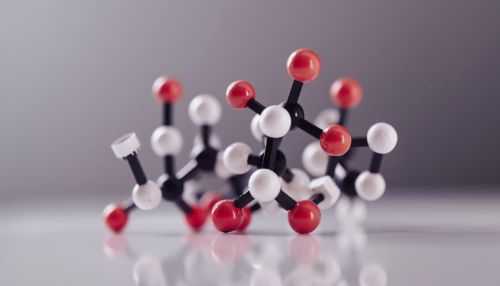Dimethylallyl pyrophosphate
Introduction
Dimethylallyl pyrophosphate (DMAPP) is a key intermediate in the biosynthesis of terpenes and terpenoids, a large and diverse class of organic compounds that are produced by a variety of plants, particularly conifers and citrus trees. DMAPP is derived from mevalonic acid in the mevalonate pathway and from 1-deoxy-D-xylulose 5-phosphate in the non-mevalonate pathway, also known as the MEP pathway or the DOXP pathway.


Structure and Properties
DMAPP is a five-carbon molecule with a pyrophosphate group attached to one end. The pyrophosphate group is a strong leaving group, which makes DMAPP an excellent substrate for the prenyltransferases, the enzymes that catalyze the transfer of the dimethylallyl group to other molecules. The structure of DMAPP is similar to that of its isomer, isopentenyl pyrophosphate (IPP), the only difference being the position of the double bond.
Biosynthesis
DMAPP is synthesized in organisms via two distinct pathways: the mevalonate pathway and the non-mevalonate pathway. The mevalonate pathway, also known as the HMG-CoA reductase pathway, is used by animals, fungi, and some bacteria. The non-mevalonate pathway, also known as the MEP/DOXP pathway, is used by most bacteria, algae, and plants.
Mevalonate Pathway
In the mevalonate pathway, DMAPP is synthesized from acetyl-CoA via a series of enzymatic reactions. The first step is the condensation of two molecules of acetyl-CoA to form acetoacetyl-CoA, which is catalyzed by the enzyme thiolase. The acetoacetyl-CoA is then reduced to 3-hydroxy-3-methylglutaryl-CoA (HMG-CoA) by the enzyme HMG-CoA reductase, which is the rate-limiting step of the pathway. The HMG-CoA is then converted to mevalonate by the enzyme HMG-CoA lyase. The mevalonate is then phosphorylated twice by the enzyme mevalonate kinase and phosphomevalonate kinase, and then decarboxylated by the enzyme mevalonate decarboxylase to yield IPP. The IPP is then isomerized to DMAPP by the enzyme isopentenyl-diphosphate delta isomerase.
Non-mevalonate Pathway
In the non-mevalonate pathway, DMAPP is synthesized from glyceraldehyde 3-phosphate and pyruvate via a series of enzymatic reactions. The first step is the condensation of glyceraldehyde 3-phosphate and pyruvate to form 1-deoxy-D-xylulose 5-phosphate (DOXP), which is catalyzed by the enzyme DOXP synthase. The DOXP is then reduced to 2-C-methyl-D-erythritol 4-phosphate (MEP) by the enzyme DOXP reductoisomerase. The MEP is then converted to 4-diphosphocytidyl-2-C-methyl-D-erythritol (CDP-ME) by the enzyme MEP cytidylyltransferase, and then to 4-diphosphocytidyl-2-C-methyl-D-erythritol 2-phosphate (CDP-ME2P) by the enzyme MEP kinase. The CDP-ME2P is then converted to 2-C-methyl-D-erythritol 2,4-cyclodiphosphate (MEcPP) by the enzyme MEcPP synthase, and then to (E)-4-hydroxy-3-methylbut-2-enyl diphosphate (HMBPP) by the enzyme HMBPP synthase. The HMBPP is then reduced to IPP and DMAPP by the enzyme HMBPP reductase.
Role in Terpene and Terpenoid Biosynthesis
DMAPP is a key intermediate in the biosynthesis of terpenes and terpenoids. It serves as a building block for the synthesis of a wide variety of compounds, including monoterpenes, sesquiterpenes, diterpenes, triterpenes, and tetraterpenes. DMAPP is also a precursor for the synthesis of isoprenoids, a large and diverse class of compounds that includes sterols, carotenoids, quinones, and prenylated proteins.
